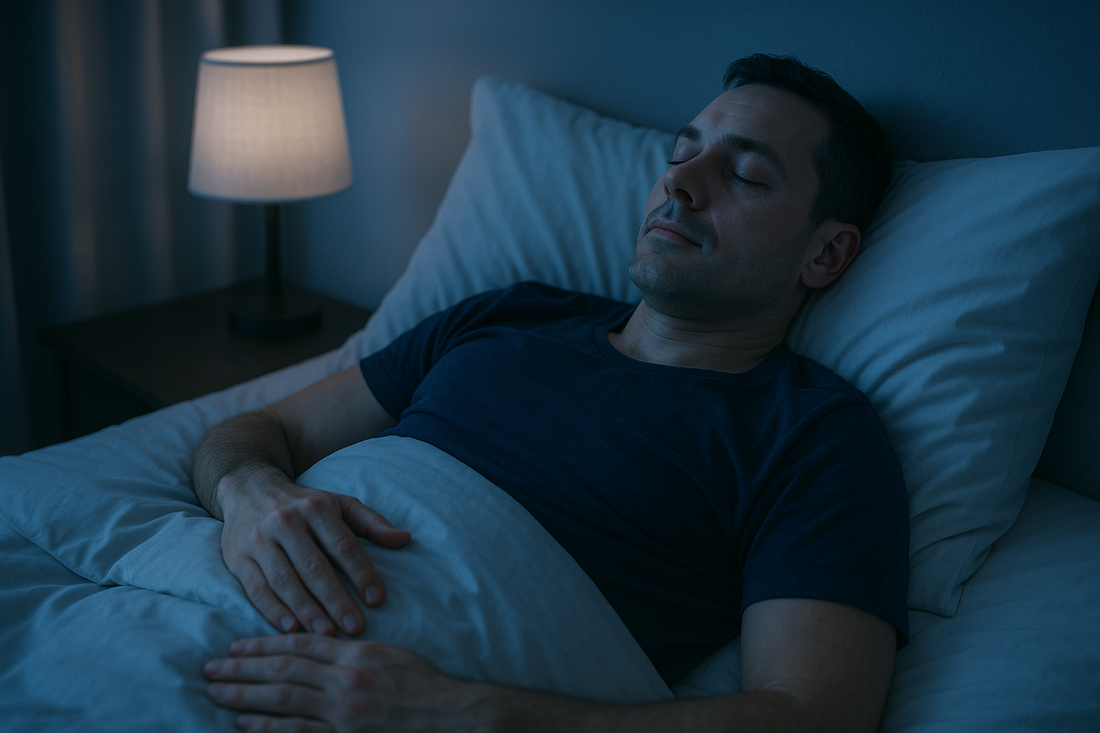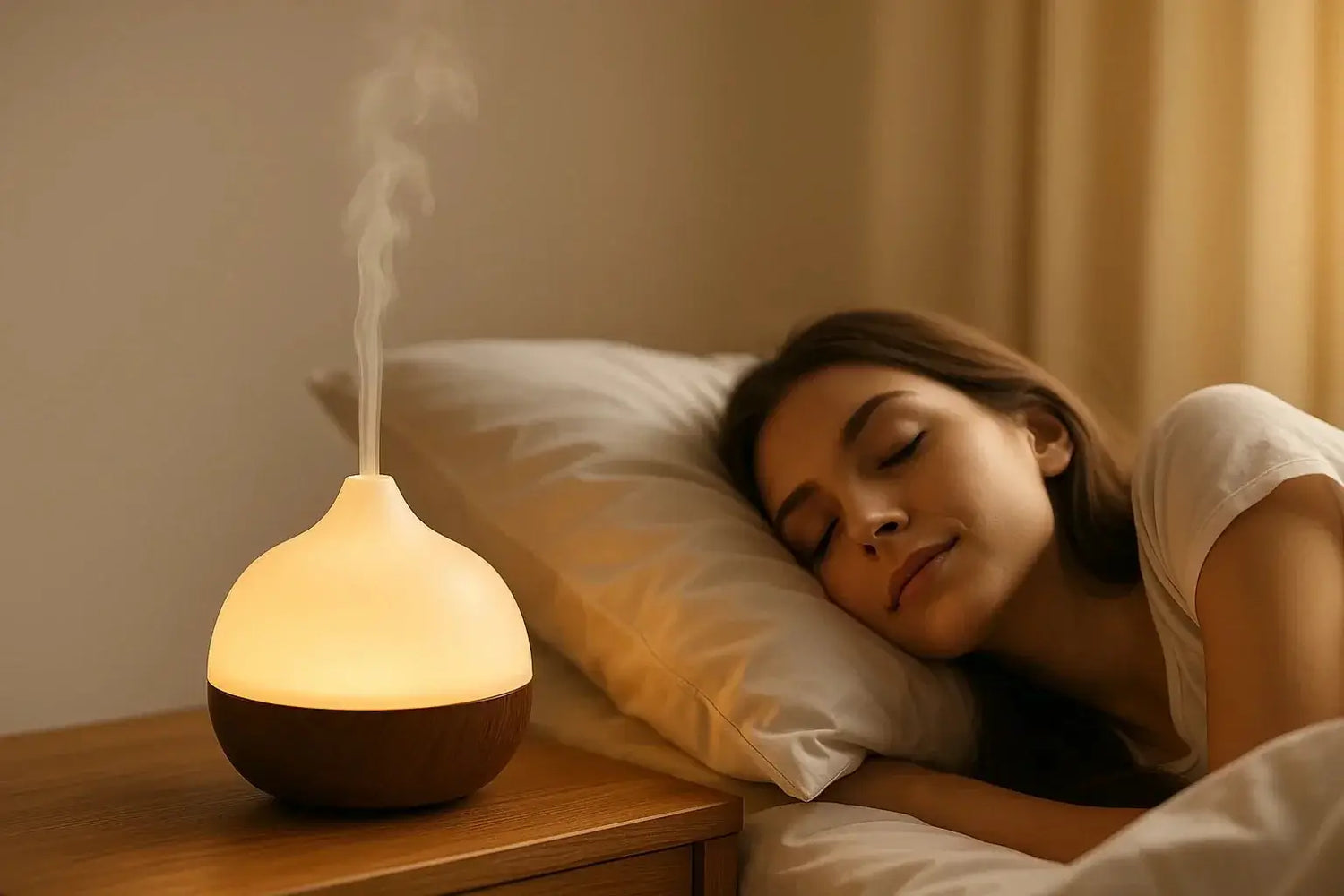
How to Fall Asleep Instantly: Military Method + 9 More Tricks
Share
Are you tired of tossing and turning in bed, staring at the ceiling, and wishing for sleep to come? If you’ve ever experienced those frustrating nights when your mind races with thoughts and worries, you're not alone. Many of us struggle to quiet our minds and drift into the sweet embrace of sleep. But what if I told you that there are effective techniques that could help you fall asleep instantly? In this comprehensive guide, we’ll explore ten powerful methods, including the renowned Military Sleep Method. So grab your favorite pillow, settle in, and let’s dive into the world of instant sleep techniques!
1. The Military Sleep Method
The Military Sleep Method has been developed and perfected by the U.S. Navy to allow soldiers to fall asleep in any situation, even under stressful conditions. This method is highly effective and particularly useful when you need to sleep in a hurry. Here’s how to master it:
- Relax Your Facial Muscles: Start by consciously relaxing all the muscles in your face, including your tongue, jaw, and the muscles around your eyes. Let go of any tension you may be holding.
- Drop Your Shoulders: Allow your shoulders to drop and let your hands fall to the sides of your body. This helps to release any remaining tension in your upper body.
- Exhale and Relax Your Chest: Let go of the air in your lungs and focus on relaxing your chest. Visualize it becoming heavy and calming.
- Relax Your Legs: With your upper body relaxed, shift your focus to your legs. Let them go limp, starting with your thighs and moving down to your calves.
- Clear Your Mind: For the next 10 seconds, try to clear your mind completely. If thoughts keep creeping in, repeat the phrase “don’t think” over and over for a count of ten.
- Visualize a Calming Scene: If you’re still awake, picture a serene and peaceful scene, such as lying in a canoe on a calm lake or snuggled up in a cozy blanket. Let that image fill your mind until you drift off.
2. 4-7-8 Breathing
Developed by Dr. Andrew Weil, the 4-7-8 breathing technique is a simple yet powerful method that promotes relaxation and calms the nervous system. It’s great for reducing anxiety and stress, which often interfere with sleep. Here’s how to perform it:
- Inhale: Close your mouth and inhale quietly through your nose for a count of 4.
- Hold Your Breath: Hold your breath for a count of 7. This may feel a bit challenging at first, but it gets easier with practice.
- Exhale: Exhale completely through your mouth, making a whoosh sound for a count of 8. Emphasize the release of air, letting go of tension along with it.
- Repeat: Repeat this cycle for four full breaths. You can gradually increase the number of cycles as you become more comfortable with the technique.
3. Body Scan Technique
The Body Scan Technique is a form of mindfulness meditation that helps to center your thoughts, clear away tension, and promote relaxation. This practice encourages you to observe sensations in your body without judgment. Here’s how to do it:
- Get Comfortable: Lie down comfortably on your back. Close your eyes and take a few deep breaths, allowing your body to settle into the bed.
- Begin at the Top: Start from the top of your head and work your way down. Focus on each part of your body, from your forehead to your toes.
- Notice Tension: As you focus on each body part, notice any tension or discomfort. Acknowledge it, and then consciously relax that area.
- Continue Down: Move down your body, pausing at each area to breathe deeply and release tension.
- Finish with Awareness: Once you've scanned your entire body, take a few moments to feel the overall relaxation and heaviness in your limbs.
4. Paradoxical Intention
Paradoxical intention is a psychological technique that involves attempting to do the opposite of what you want to achieve. It may sound counterproductive, but it can actually help reduce performance anxiety around sleep. Here’s how to use this method:
- Get Comfortable: Lay down in your bed and get comfortable, allowing your body to relax into the mattress.
- Set Your Intention: Tell yourself that you are going to stay awake for as long as possible. Focus on the idea of actively trying to keep your eyes open.
- Embrace the Pressure: As you focus on staying awake, you’ll likely find that your body begins to relax without the pressure of trying to fall asleep.
- Give It Time: This method may take some practice, but many people find that they drift off naturally after a few minutes of trying to stay awake.
5. Visualization
Visualization is a technique that involves creating mental images to distract your mind from stressful thoughts and induce a sense of calm. Here’s how you can use visualization to aid sleep:
- Close Your Eyes: Begin by closing your eyes and taking a few deep breaths to settle your mind.
- Create a Peaceful Scene: Imagine yourself in a tranquil environment, such as a sunlit beach, a serene forest, or a cozy cabin in the mountains.
- Engage Your Senses: As you visualize the scene, engage all of your senses. Imagine how the warm sun feels on your skin, the sound of waves lapping at the shore, or the scent of pine trees in the forest.
- Let Go of Thoughts: Allow the calming sensations of your visualization to wash over you, helping your mind to drift away from daily stressors.
6. Acupressure Points
Acupressure is a traditional Chinese medicine technique that involves applying pressure on specific points on the body to promote relaxation and relieve insomnia. Here’s how to use acupressure for better sleep:
- Locate the Yin Tang Point: This pressure point is located between your eyebrows. Using your fingertip, apply gentle pressure for a few seconds while breathing deeply.
- Find the SP6 Point: SP6 is about four finger widths above your inner ankle bone on the inside of your leg. Press this point to help relieve anxiety and insomnia.
- Try the Heart 7 Point: This point is located at the wrist crease on the pinky side. Apply gentle pressure here to promote relaxation.
- Use a Consistent Rhythm: For each point, press gently and maintain pressure for up to 1-2 minutes. Breathe deeply and focus on the sensations.
7. Complete Sensory Deprivation
Eliminating sensory input can significantly enhance your ability to sleep. This can be especially helpful for those who are sensitive to light and noise. Here are ways to create a sensory deprivation environment:
- Use a Sleep Mask: To block out light completely, consider using a high-quality 3D Sleep Mask. These masks fit snugly and help ensure total darkness.
- Employ Earplugs or White Noise: Wear earplugs to block out noise, or use a white noise machine to create a soothing sound environment.
- Create an Ideal Sleep Space: Make your bedroom as dark and quiet as possible. Consider using blackout curtains in addition to your sleep mask, especially if external light sources are an issue.
8. Temperature Drop Trick
Research shows that a slight drop in body temperature can signal the body that it’s time for sleep. Here’s how to effectively use temperature to your advantage:
- Warm Shower or Bath: Start by taking a warm shower or bath. The initial warmth raises your body temperature, but once you exit, your temperature will drop, prompting sleepiness.
- Cool Room Temperature: Adjust your thermostat to a cooler temperature, ideally between 65-68°F (18-20°C). This cooler environment helps facilitate sleep.
- Use Breathable Materials: Choose breathable sheets and blankets that help regulate your body temperature throughout the night.
9. Aromatherapy Instant Calm
Aromatherapy harnesses the power of scent to promote relaxation and calmness, making it a powerful tool for sleep. Here’s how to incorporate aromatherapy into your bedtime routine:
- Select Soothing Essential Oils: Choose calming essential oils such as lavender, chamomile, or bergamot known for their sleep-inducing properties.
- Use a Sleep Diffuser: Invest in a Sleep Diffuser. Fill it with water and a few drops of your chosen oils before bedtime to fill your room with calming scents.
- Apply Oils Directly: Consider applying a couple of drops of essential oil to your pillow or wrists for a more intense scent experience.
10. White Noise Immersion
White noise is a consistent sound that can mask other noises that may disrupt your sleep. Here’s how to effectively create a white noise environment:
- Use a White Noise Machine: Invest in a white noise machine or smartphone app that offers various calming sounds.
- Experiment with Different Sounds: Try various sounds, such as rain, ocean waves, or even a gentle fan hum, to find what helps you sleep best.
- Set It at the Right Volume: Adjust the volume to an optimal level where it drowns out disturbing noises but isn’t overwhelmingly loud.
Sleep Mask vs Blackout Curtains: Which Works Faster?
When it comes to blocking out light, you might wonder if a sleep mask or blackout curtains work faster for sleep. Here’s a quick comparison:
- Sleep Mask: Highly portable and effective for blocking out light immediately, making it ideal for travel or quick naps. You can put it on and sleep anywhere, making it a quick fix for light disturbances.
- Blackout Curtains: Provide wide coverage and are ideal for long-term light control in your bedroom. However, installing them may take time, and they aren’t as easily transported as sleep masks.
If you’re looking for immediate relief from light disturbances, a sleep mask is probably your best bet!
Frequently Asked Questions
1. Can I really fall asleep instantly with these techniques?
While not every technique guarantees instant sleep, many users find that practicing these methods can significantly reduce the time it takes to fall asleep, sometimes within minutes.
2. Do I need to try all these techniques at once?
Absolutely not! Everyone is different, so it's best to experiment with a few techniques at a time to see which ones work best for you. You might find that a combination of methods yields the best results.
3. Are these techniques suitable for everyone?
Generally, these methods are safe for most individuals. However, if you have chronic sleep issues or specific health conditions, it’s always best to consult a healthcare professional before trying new techniques.
4. How can QuietAura help with my sleep issues?
QuietAura offers a variety of sleep-enhancing products, such as the 3D Sleep Mask, Sleep Diffuser, and Amber Reading Light. These tools can create an ideal sleep environment, making it easier for you to fall asleep instantly.
5. Can I use PayPal to purchase QuietAura products?
Yes! QuietAura accepts PayPal for your convenience, allowing you to complete your purchases quickly and securely.
Now that you're armed with

